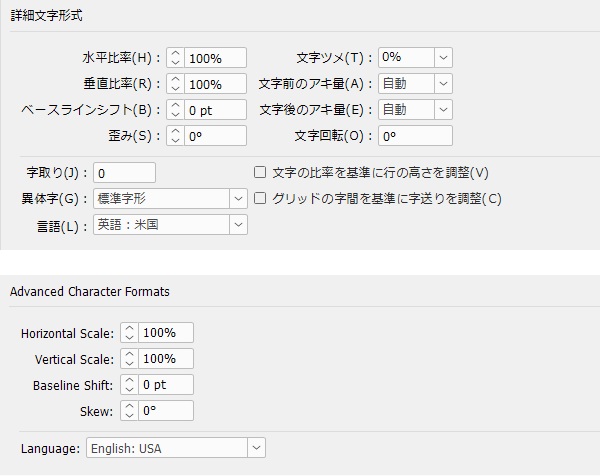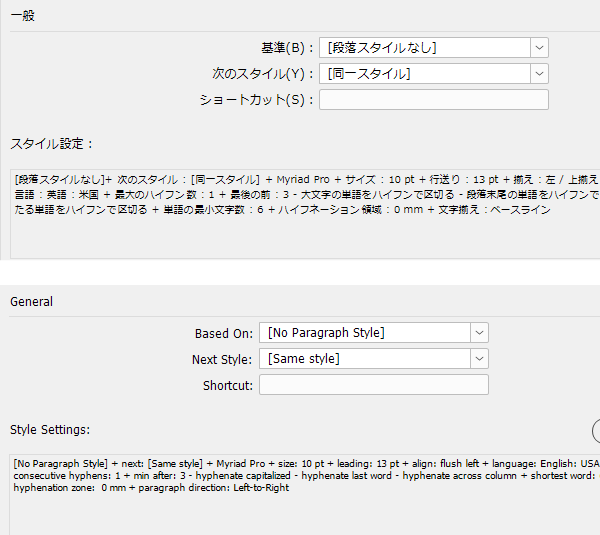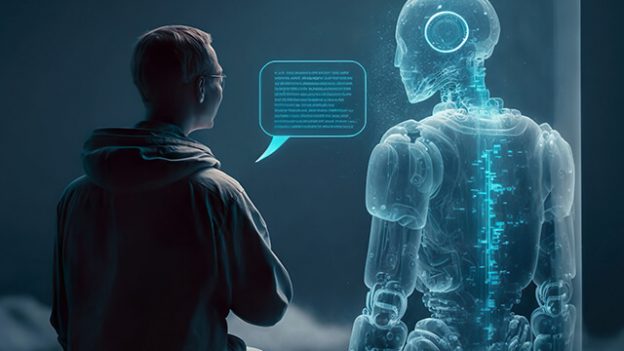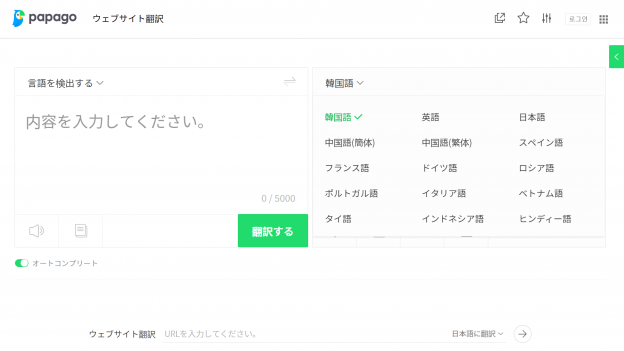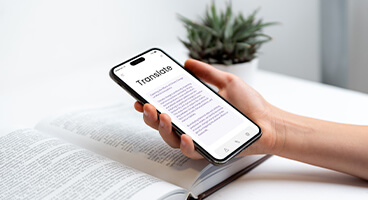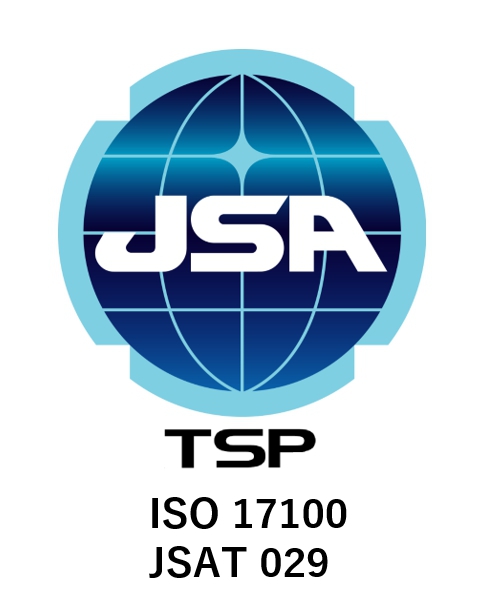
Following the previous ChatGPT and DeepL①: Comparison of Japanese-English Translation Accuracy in Manufacturing and IT Fields, we will once again examine the translation quality and characteristics of DeepL and ChatGPT using technical documents from the manufacturing and IT sectors as the subject. This time, we will input an additional specific instruction to ChatGPT’s initial translation result as needed and also verify the effect of this improvement.
- Table of Contents
-
- 1. Verification ①: Can appropriate formatting be used according to the original text?
- 2. Verification ②: How to handle expressions unique to Japanese?
- 3. Verification ③: Can the structure be changed considering readability?
- 4. Verification ④: Can complicated modifier relationships be accurately interpreted?
- 5. Verification ⑤: Do we devise parts of speech for readability?
- 6. Summary
Verification ①: Whether to use the appropriate format according to the original text
| Source | Each focus has two types: Hybrid and Auto. |
|---|---|
| DeepL | 各焦点にはハイブリッドとオートの2種類があります。 |
| ChatGPT | Each focal point has two types, Hybrid and Auto. |
Both DeepL and ChatGPT use a format with colons in their translations. While using colons can be effective in specific cases such as lists, in this case, since the original text is in a normal sentence format, it is more appropriate not to use colons.
Based on this, I tried entering the following instructions for the above ChatGPT translation results.
<Please generate expressions without using colons>
| ChatGPT | Each focal point comes in two types, Hybrid and Auto. |
|---|
By reflecting this instruction, it is clear that the quality of the translation has indeed improved.
When translating such original texts, there is also the option to enhance readability by indicating "Hybrid and Auto" in parentheses. Below is an example of a human translation using this method.
| Human Translation | Two types (Hybrid and Auto) are available for each focal point. |
|---|
Verification ②: How to handle expressions unique to Japanese
| Source | Please note that this does not affect its use. |
|---|---|
| DeepL | This does not affect usage. |
| ChatGPT | This does not affect usage. Thank you for your understanding. |
The key point here was to check whether it is possible to deliberately omit translating "ご了承ください" and handle it as is, or to replace it with a more natural English expression.
As a result, DeepL output the typical translation of "ご了承ください" as "Please note that," while ChatGPT translated it as "Thank you for understanding." (Since "Thank you for your understanding." sounded unnatural, when tried again, it returned "This does not affect usage, so please be aware." Although this was better than "Thank you for your understanding.", the unnaturalness was not resolved.)
In such cases, it is more natural to simply omit translating "ご了承ください," so I tried giving the following instruction for the above ChatGPT translation result.
<There is no need to translate "ご了承ください">
| ChatGPT | This does not affect usage. |
|---|
Following the instructions, ChatGPT omitted "Thank you for your understanding." and generated only "This does not affect usage." As a result, the quality of the translation improved, producing a more natural expression than the initial output.
By the way, both DeepL and ChatGPT used the verb "affect" for this original text. While that is not a problem in itself, there is also the option of using the noun "effect." Below is an example of a human translation using the noun "effect."
| Human Translation | There is no effect on operations. |
|---|
* In the above human translation example, the original word "使用" is translated as "operations" according to the context. Since machine translation and AI translation basically cannot interpret the context and adjust expressions appropriately, this point is excluded from evaluation.
Verification ③: Is it possible to change the structure considering readability?
| Source | You can align the position using keyboard operations after clicking the TS viewer. |
|---|---|
| DeepL | After clicking the TS viewer, the position can be aligned using keyboard operations. |
| ChatGPT | After clicking the TS viewer, you can align the position using keyboard operations. |
Here, both DeepL and ChatGPT produced translations using an adverbial clause + main clause structure to match the original Japanese text. From a linguistic perspective, both translations are acceptable and correctly convey the original meaning. However, from a technical writing standpoint, there is room to improve sentence structure to enhance readability. Additionally, in the translation generated by ChatGPT, the use of the pronoun "you" feels somewhat redundant, so it is preferable to avoid it if possible.
Based on this, the following instructions were entered for the above ChatGPT translation result.
<Avoid using the pronoun 'you' and use SVOC structure instead of an adverbial clause + main clause structure>
| ChatGPT | Click the TS viewer and use the keyboard to align the position. |
|---|
The translation was clearly improved by this instruction, but since there was a specific directive to use the SVOC structure, it would have been preferable if a translation like the following had been produced.
| Human Translation | Clicking the TS viewer enables alignment using keyboard operations. |
|---|
* In the above example of human translation, the original phrase "位置合わせを行う" is translated as "registration" depending on the context. Since machine translation and AI translation basically cannot interpret context to adjust expressions appropriately, this point is excluded from evaluation.
Verification ④: Can complicated modification relationships be accurately understood?
| Source | Vector field (inflow) on the base image |
|---|---|
| DeepL | 基底画像上のベクトル場(インフロー) |
| ChatGPT | Vector field (inflow) on the base image |
In the original text, “(inflow)” is placed at the end of the sentence modifying “vector field.” However, in English, since “vector field” comes at the beginning of the sentence, “(inflow)” must also be moved immediately after “vector field” accordingly. DeepL failed to correctly recognize that “(inflow)” modifies “vector field” and mistakenly placed “(in-flow)” at the end of the sentence as is. On the other hand, ChatGPT correctly understood this modifying relationship and placed “(inflow)” in the appropriate position.
In this example, ChatGPT handled the translation appropriately, so no additional instructions for translation correction were necessary.
| ChatGPT | ――― |
|---|
By the way, in the case of human translation, it would be as follows. (The definite article before "base image" is omitted for conciseness as a heading.)
| Human Translation | Vector field (inflow) on base image |
|---|
Verification ⑤: Should parts of speech be adjusted for readability?
| Source | You can edit, duplicate, delete, and reorder registered presets. |
|---|---|
| DeepL | Registered presets can be edited, duplicated, deleted, and reordered. |
| ChatGPT | You can edit, duplicate, delete, or reorder the registered presets. |
DeepL generated an imperative expression. While this is not incorrect in itself, the problem is that it does not accurately convey the possibility implied by "can do." On the other hand, ChatGPT's translation correctly reflects the possibility of "can do" by using "can." However, because it uses the pronoun "you" as in example ③, the overall expression becomes somewhat redundant and differs slightly from the style preferred in technical translation.
Based on this point, the following instruction was entered regarding the above ChatGPT translation result.
<Avoid using "you">
| ChatGPT | Editing, duplicating, deleting, and reordering registered presets is supported. |
|---|
This is certainly an improvement over the initial translation. However, listing four gerunds like this makes the subject too long, which disrupts the overall balance of the sentence and makes it harder to read. One way to improve this is to make "registered presets" the subject and construct the sentence using an SVO structure. A rewrite would look like the following.
| Human Translation | 登録済みプリセットは編集、複製、削除、並べ替えが可能です。 |
|---|
6. Summary
Based on these evaluation results, I felt that overall, ChatGPT's translations are of higher quality than DeepL's. However, there is still room for improvement in ChatGPT, such as the need to avoid excessive use of the pronoun "you" in accordance with technical writing rules.
By the way, rather than processing sentences individually as in this verification, ChatGPT has the potential to produce more natural and higher-quality translations by translating segments together, including the surrounding context.
ChatGPT has the great advantage of allowing you to give specific instructions for translation. However, on the other hand, to obtain the desired translation results, it may be necessary to add instructions multiple times, which can take time in the back-and-forth process. As a result, it may not be suitable for large-scale translation tasks. Additionally, when using ChatGPT for tasks with many rules regarding grammar, structure, and format, as well as extensive terminology in glossaries, post-editing work along with quality assurance and review become indispensable.
Human Science offers human translation services and post-editing services. We are a translation company that handles translations in a wide range of fields including software, manufacturing, IT, automotive, and distribution. Since 1994, we have been assisting many companies with their translation needs. If you have any concerns like the ones below, please feel free to consult us.
・Translation takes too long!
・Quality is poor and there are many complaints!
・Translation costs are too high!
・Many issues are caused by the Japanese manual!
・Unfamiliar with overseas laws and standards!
Related Services
Translation Services
Post-Editing and Operation Support Services
Machine Translation / Automatic Translation







